How To Cook Bacon in the Oven
- By Jennifer Segal
- Updated September 17, 2025
- 33 Comments
- Leave a Review

This post may contain affiliate links. Read my full disclosure policy.
Cooking bacon in the oven is hands-down the easiest way to achieve evenly cooked, crispy bacon without the mess of stovetop splatter. Whether you’re cooking for a crowd or just want to make breakfast a breeze, this method ensures perfectly crisp bacon with minimal effort.
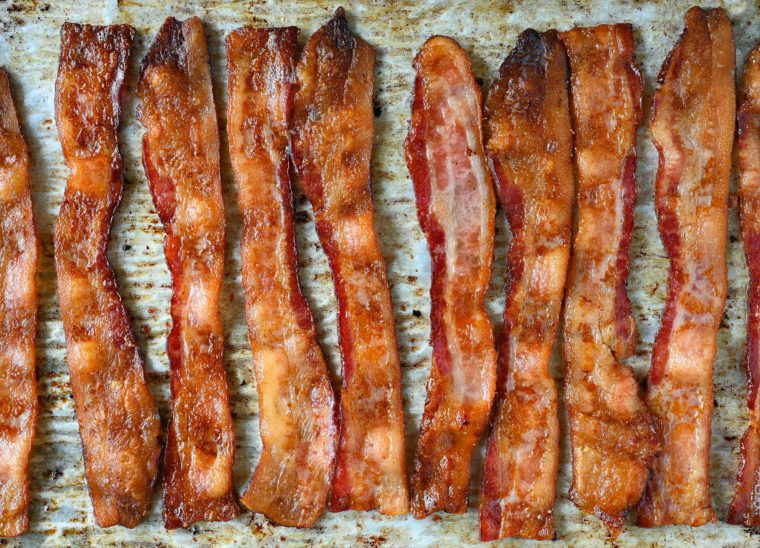
If there’s one thing that always gets my family circling the kitchen, it’s the irresistible smell of sizzling bacon. Whether served on its own, next to pancakes, scrambled eggs, or a cheesy omelette, or added to salads and baked potatoes, bacon makes any meal better. While you can cook a few slices on the stovetop or in the microwave, learning how to cook bacon in the oven is a game-changer. It’s the easiest way to prepare a large batch with minimal effort, ensuring crispy, chewy, evenly cooked bacon every time. Plus, cleanup is a breeze, and you can easily multi-task while it cooks.
With this oven method, you can cook about 12 slices of bacon on a single baking sheet. To make more than that, just use two baking sheets and increase the cooking time by a few minutes.
“First time baking bacon. Delicious and baked perfectly! And the parchment paper did make it cook evenly!”
Best Bacon for Oven Cooking
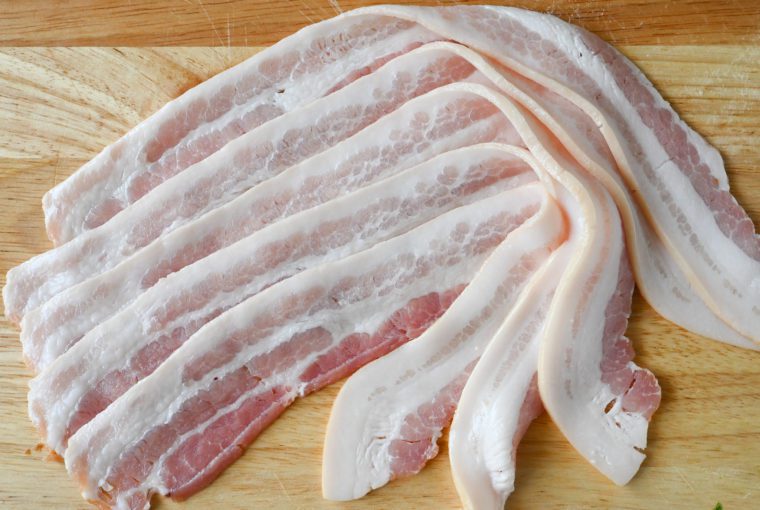
For oven cooking, you’ll most often use American bacon (the classic strips cut from pork belly). Most supermarkets carry both regular and thick-cut—thick-cut is about 50% thicker, so it takes a few extra minutes in the oven and stays a little chewier, while regular bacon crisps up faster.
Turkey bacon also works in the oven. Just keep in mind it cooks much faster and won’t get quite as crisp as traditional pork bacon.
(Curious about other types? Canadian bacon and Italian pancetta are delicious, but they’re usually used in different ways—think eggs Benedict or pasta sauces.)
Step-by-Step Instructions To Bake Bacon
Step 1: Get the oven and pan ready. Preheat the oven with a rack in the center. For easy cleanup, line a large rimmed baking sheet (about 13×18 inches) with foil, letting it hang over the sides, then add a layer of parchment on top. Lay about 12 slices of bacon in a single layer, making sure they don’t overlap.
Pro Tip: Lining the pan with both foil and parchment makes cleanup a breeze—the foil catches the grease, and the parchment keeps the bacon from sticking.

Step 2: Bake the bacon. Slide the pan into the oven and bake until it’s done to your liking—about 14 to 18 minutes for regular bacon or 18 to 20 minutes for thick-cut. Rotate the pan halfway through, and keep an eye on it near the end. A minute more or less can make the difference between perfectly crisp and a little too crunchy.
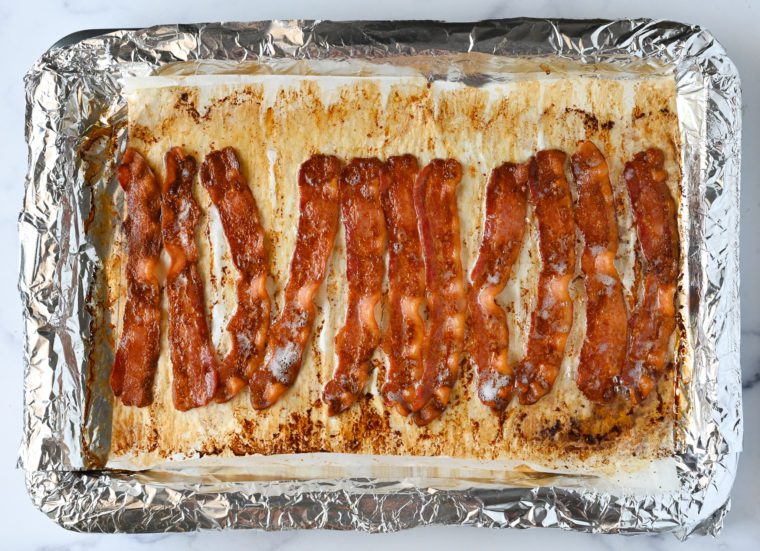
Step 3: Drain and serve. Carefully pull the pan from the oven—remember, there’s hot grease. Use tongs to move the bacon onto a paper towel-lined plate or cutting board to drain. Serve warm and enjoy!
Pro tip: Want to save the bacon grease? Strain it into a heatproof jar and stash it in the fridge—it’s liquid gold for cooking.
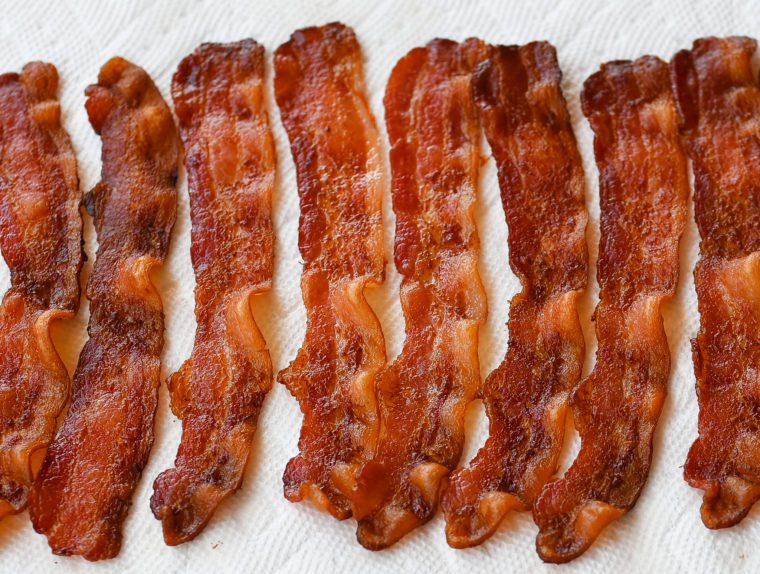
Storing & USing Leftover Bacon
If you have leftover bacon, let it cool completely, then store in an airtight container in the refrigerator for up to a week or freeze for longer storage. Reheat in the microwave or oven before serving. Leftover bacon can be used in a variety of dishes—chop it up and toss it into salads, add it to soups for extra flavor, or incorporate it into breakfast casseroles. It’s also great on sandwiches, smash burgers, or mixed into mac and cheese.
What To Do With Bacon Grease
Don’t toss out that flavorful bacon grease! After cooking bacon, strain the grease through a fine mesh sieve into a heatproof container and store it in the refrigerator for up to a month or freeze for longer storage. Bacon grease can be used for sautéing vegetables, frying over easy eggs, or adding depth to dishes like beans, potatoes, and cornbread. It’s also great for greasing pans when baking savory goods.
Love Bacon? Try These Recipes
How to Cook Bacon in the Oven

The easiest way to cook bacon? In the oven! It’s perfectly crispy, evenly cooked, and mess-free—great for any meal or when cooking a big batch.
Ingredients
- 12 slices bacon, preferably not thick-cut (see note)
Instructions
- Preheat the oven to 400°F and set an oven rack in the middle position.
- For easy clean-up, line a 13 x 18-inch rimmed baking sheet with heavy-duty wide aluminum foil and so that there is some overhang on all sides (this prevents the grease from getting onto the baking sheet), then cover with a sheet of parchment paper. Lay as many slices of bacon as you'd like to cook in a single layer on the baking sheet. You should be able to fit about 12 slices (try to keep them from overlapping).
- Bake 14 to 18 minutes for regular bacon and 18 to 20 minutes for thick-cut bacon, carefully rotating the baking sheet from front to back about halfway through cooking. Keep an eye on the bacon towards the end of the cooking time, as you may need to add or subtract a minute or so depending on how crispy you like your bacon.
- Carefully remove the bacon from the oven – there will be a lot of hot grease – and, using tongs, transfer it to a paper towel-lined plate or cutting board.
- If you'd like to save the bacon grease for another use, strain it into a heatproof jar.
- Note: With this method, you can cook up to one pound of bacon on a single baking sheet. To make more than a pound, just use two baking sheets and increase the cooking time by a few minutes.
- Note: Most supermarkets carry regular and thick-cut bacon. Both types will work, but I prefer regular bacon for this method – it gets crispier and thick-cut bacon renders a ton of grease onto the baking sheet, making the pan difficult to move in and out of the oven safely.
Nutrition Information
Powered by ![]()
- Per serving (6 servings)
- Serving size: 2 slices
- Calories: 90
- Fat: 7 g
- Saturated fat: 3 g
- Carbohydrates: 0 g
- Sugar: 0 g
- Fiber: 0 g
- Protein: 7 g
- Sodium: 360 mg
- Cholesterol: 20 mg
This website is written and produced for informational purposes only. I am not a certified nutritionist and the nutritional data on this site has not been evaluated or approved by a nutritionist or the Food and Drug Administration. Nutritional information is offered as a courtesy and should not be construed as a guarantee. The data is calculated through an online nutritional calculator, Edamam.com. Although I do my best to provide accurate nutritional information, these figures should be considered estimates only. Varying factors such as product types or brands purchased, natural fluctuations in fresh produce, and the way ingredients are processed change the effective nutritional information in any given recipe. Furthermore, different online calculators provide different results depending on their own nutrition fact sources and algorithms. To obtain the most accurate nutritional information in a given recipe, you should calculate the nutritional information with the actual ingredients used in your recipe, using your preferred nutrition calculator.
See more recipes:
Comments
Add a Comment Cancel reply
This site uses Akismet to reduce spam. Learn how your comment data is processed.
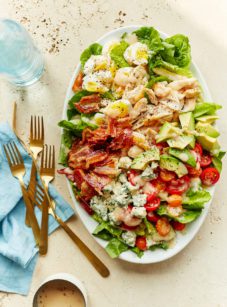
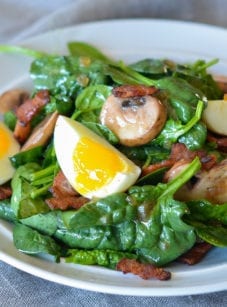

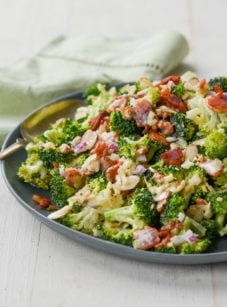
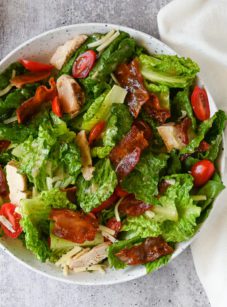



When bacon is cooked in the oven, does bacon grease get all over the oven?
No, the grease accumulates on the foil and parchment and will not mess up your oven.
I’m not sure how many years I’ve made bacon this way but I love the simplicity and neatness of it. We like it super crispy. I drain on paper towels to cool and then put in a zip bag to freeze. Ready when we want it.
Amazing you saved my day! ❤️
I had no idea that one had to put parchment paper on top of the aluminum foil for the bacon 🥓 to cook evenly!
Thank You so much 💝
First time baking bacon. Delicious and baked perfectly! And the parchment paper did make it cook evenly! Thank you!!!
This looks delicious. I’m going to try it this weekend. I was just wondering if there is a particular brand of bacon you like to use. Have always bought Boars head (from Canada) but lately have found the slices cut almost too thin to deal with. Don’t really like thick cut. I remember in VT all the bacon was cut so nicely no matter what bacon brand. Is there one regular cut brand you recommend?
Hi Jane, I usually buy Smithfield brand. 😊
Thank you for having the time in the header
Hi Jen! I absolutely love your recipes and am thrilled that I can cook bacon in the oven (saves my stove-top!). I am having trouble with the timing though. I usually am baking an entire pack of the Hormel bacon you recommend – using two baking sheets and rotating, etc. as per your directions. It always seems to take twice or three times longer to cook and the bacon never seems to turn out as well browned as in your picture. I turned up the heat to 410 on a subsequent batch – and that didn’t seem to help either. Appreciate any ideas/recommendations. Appreciate you and your expertise!
Hi Karen, So glad you like the recipes! I’m sorry you’re having the problem with he bacon though – do you happen to be using thick cut?
I used the bacon you recommended. I think I’ll double-check my oven with a thermometer…that may be the issue…. All the best – Karen
👍
I’ve been wanting to try oven-frying my bacon for a long time; however, when I see the amount of fat/grease that pan frying or even microwave cooking creates, I shudder to think about having to clean my oven every time I use it to cook bacon. Any thoughts?
Love your recipes!
Hi Dakota, As long as you follow the instructions, the fat should drain onto the pan. It shouldn’t make a mess of the oven. Hope that helps!